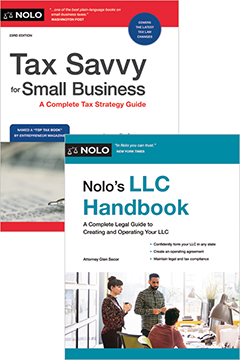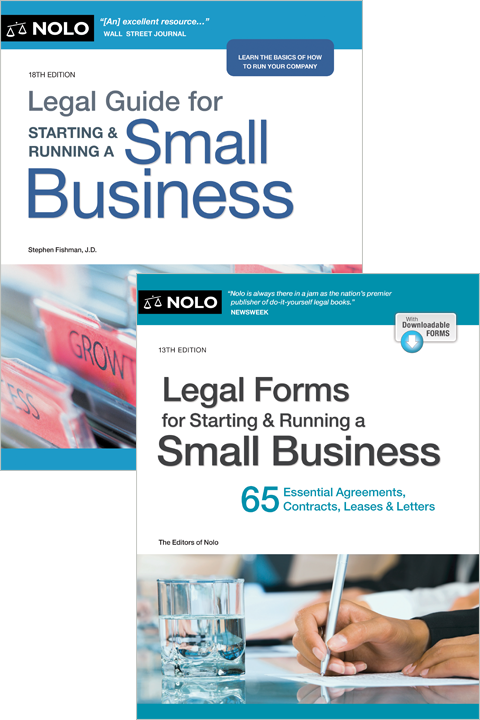Want to form a single-member LLC (SMLLC) in Texas? Pick a business name, file a certificate of formation, register with the Comptroller of Public Accounts, and apply for the required licenses and permits.
These are the steps to form a single-member limited liability company (SMLLC) in Texas. For most formation purposes, a Texas SMLLC is considered the same as a multi-member limited liability company (LLC). So you'll need to follow Texas's business laws that are specific to LLCs.
1. Name Your SMLLC
Texas, like other states, has some basic rules for LLC (including SMLLC) names. The name of a Texas SMLLC must contain the phrase (or an abbreviation of the phrase):
- "Limited Liability Company"
- "Limited Company," or
- an abbreviation of one of the two phrases above.
For example, your name can include "LLC," "L.C.," or "Ltd. Co." (Tex. Bus. Org. Code § 5.056 (2023).)
In addition, the SMLLC's name must be distinguishable on the records of the Texas Secretary of State (SOS) from the names of other business entities already registered or reserved with the state. (Tex. Bus. Org. Code § 5.053 (2023).)
Check to make sure the name you want is available by doing a business name search on the Comptroller of Public Accounts website. You can reserve a name for 120 days. You can file for a name reservation either online through SOSDirect or by filing Form 501 (Application for Reservation or Renewal of Reservation of an Entity Name). You can also use the same form to renew your name reservation. As of 2023, the fee to reserve a name is $40.
2. File a Certificate of Formation
You create a Texas SMLLC by filing a Certificate of Formation with the SOS. To complete the articles you'll need to provide:
- the official name of your new SMLLC
- the name and address of the SMLLC's registered agent
- an indication of whether the SMLLC will be member-managed or manager-managed
- the name and address of each manager or managing member
- the name and address of the SMLLC's organizer, and
- a few other basic details.
You'll need to decide whether you want your LLC to be member-managed or manager-managed when you file your certificate of formation. If you choose to be manager-managed as an SMLLC, then either you or an outside party (nonmember) can serve as the manager.
You can download a blank certificate of formation form (Form 205) by going to the SOS website. You can also file online at the Secretary of State's SOSDirect website. As of 2023, the filing fee is $300.
Every Texas SMLLC must have a registered agent. A registered agent is an individual or business entity that agrees to accept legal papers on behalf of the SMLLC. The registered agent can be a Texas resident or a domestic or foreign business entity authorized to do business in Texas. The SMLLC can't act as its own registered agent. The registered agent must have a physical street address in Texas. (Tex. Bus. Org. Code § 5.201 (2023).)
All of the paperwork and procedural steps to start a single-member LLC in Texas can be done online using our online LLC formation application.
3. Prepare an Operating Agreement
Texas doesn't require an SMLLC to have an operating agreement. However, even though an SMLLC has just one member, an operating agreement is highly recommended. You don't need to file your SMLLC's operating agreement with the state.
The operating agreement is usually made between the single member and the LLC itself. The agreement typically covers the member's rights, duties, and obligations, as well as the SMLLC's management structure. Having an agreement in place can help with liability protection by separating your business from you personally. It also can be useful with lenders and other businesses when entering into business transactions.
If you'd like more information or help with creating an SMLLC operating agreement, see Nolo's Guide to Single-Member LLCs, by David M. Steingold (Nolo).
4. Do You Need an EIN?
An SMLLC that keeps its default tax status of disregarded entity (same as a sole proprietorship) and doesn't have employees isn't required to obtain a federal employer identification number (EIN). Instead, owners of these SMLLCs can report their business profits and losses on their personal tax returns using their own Social Security number or tax identification number.
If your SMLLC has employees or if you choose to have your SMLLC taxed as a corporation rather than as a disregarded entity, you must obtain an EIN from the IRS. Even if you're not required to obtain an EIN for your SMLLC, there are often business reasons for doing so. Banks might require an EIN to open an account in the business's name and other companies you do business with could require an EIN to process payments. In many cases, it makes sense to obtain an EIN for your SMLLC even if it's not required for federal tax purposes.
You can get an EIN by completing an online application on the IRS website. There's no filing fee.
5. Register With the Comptroller of Public Accounts
In some cases, for example, if you'll be selling goods and collecting sales tax, you'll need to register with the Texas Comptroller of Public Accounts (CPA). (Texas also imposes an annual franchise tax on most SMLLCs.) Depending on the tax involved, you might be able to register online, by mail (using the correct form), or in person at a CPA field office.
For more information on state LLC tax registration, see our article LLC annual report and tax filing requirements in Texas.
6. Apply for Business Licenses
Depending on what kind of business you're running and where it's located, you could need to obtain local or state business licenses for your SMLLC. Among other possibilities, these might include licenses related to:
- your profession or occupation
- specific goods or services you'll sell or provide
- an assumed or fictitious name for your business, and
- health and safety matters.
Learn which licenses, permits, and registrations your business might need in our article about getting a small business license in Texas.
7. No Annual Reports
Unlike most states, Texas doesn't require SMLLCs to file annual reports with the SOS. However, SMLLCs must file annual franchise tax reports. The details for computing the tax can be complicated. Check the franchise tax section of the CPA website for more information.
Getting Help Forming Your SMLLC in Texas
Forming an LLC is relatively simple compared to forming a corporation. But there are still some legal requirements and best practices that you should be aware of for your SMLLC. Many people can form and run their SMLLC on their own using some free or inexpensive self-help resources. But if you have particularly complex legal questions, consider talking to a Texas business attorney.
For additional guidance on how to form and run your SMLLC, see the single-member LLC section of our website.



